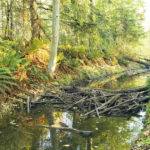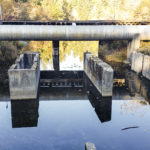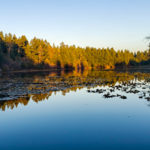The aging hydraulic diversion structure at Lake Sequalitchew was in desperate need of repair after environmental concerns and maintenance issues had begun due to its dilapidated condition for continued performance. This diversion structure maintains the backwater for the lake to help regulate the domestic drinking water supply to over 200,000 people for Joint Base Lewis McChord, as well as managing the regulated downstream flows to Sequalitchew Creek for wildlife habitat and the north canal for maintaining stormwater conveyance.
Clogging from downstream beaver dam activity has led to impediment of the lake level, which could lead to potential contamination of this vital water resource, leaving community residents without access to clean potable drinking water. Also, Pond’s environmental and water resources team determined that directing the water flow back to its historic route can contribute to the overall marsh restoration efforts occurring downstream, reestablish Salmonid spawning routes and increase marsh habitat that have been lost to past alterations.
The Pond team collaborated with the Base, the maintenance team, and the U.S. Army Corps of Engineers to mitigate these issues. Innovative solutions like simplifying the control structures, live data readings of lake and discharge levels, and beaver dam levelers not only helped with the rehabilitation, but also provided lower requirement for continued maintenance. This team collaboration provided a more resilient system for the lake, creek, and the canal so they can serve vital duties for the base and the environment in reestablishing the hydrology to Lake Sequalitchew and Sequalitchew Creek.
Pond looks forward to seeing the progress of the diversion structure at Joint Base Lewis McChord. With the design already complete, construction is anticipated to be done by July 2022.



